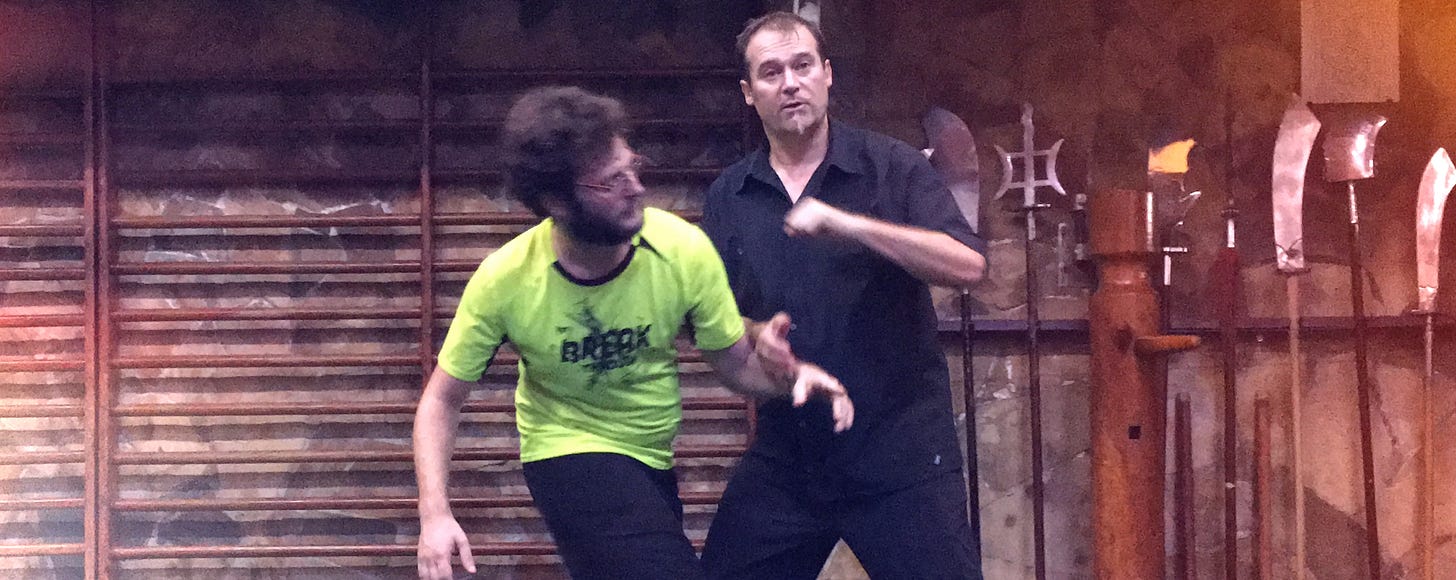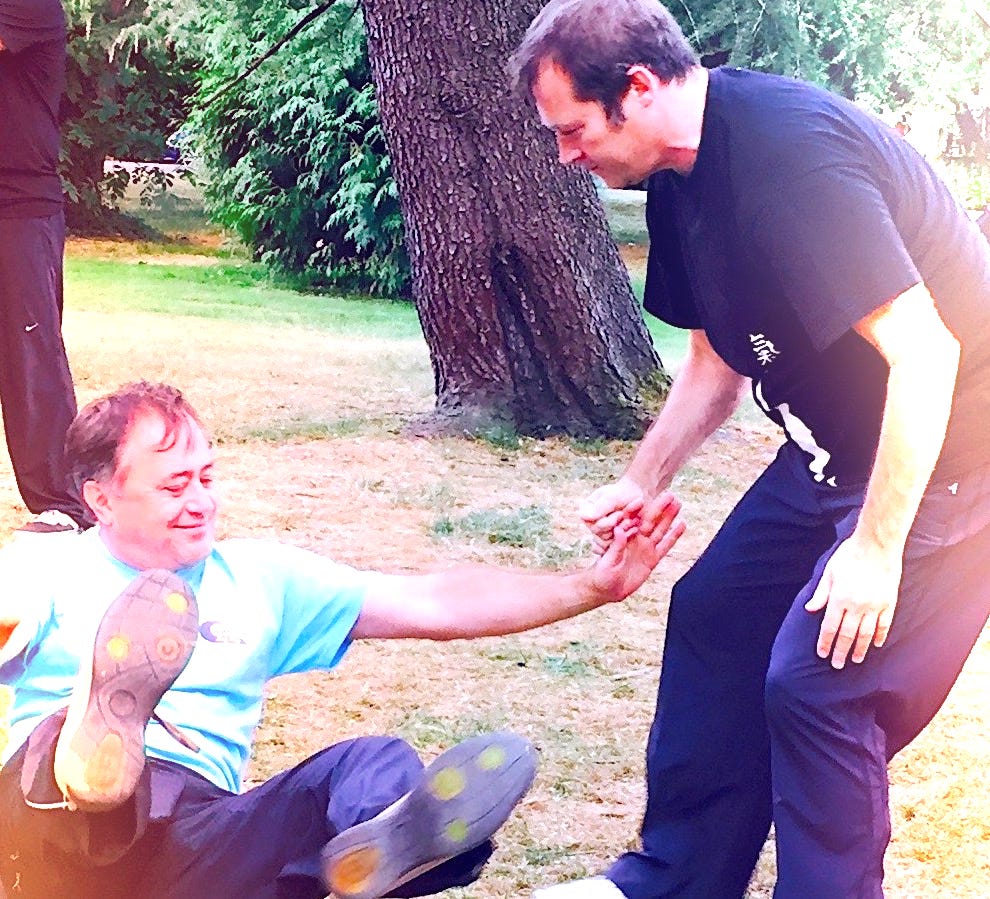This is full translation and basic explanation of the Sparring Hands Song (Dashou Ge 打手歌) which is the oldest of The Taijiquan Classics (Taijiquan Jing 太極拳經). The ‘classics’ make their first appearance in 1852 but the texts, especially this one, have much earlier underpinnings.
The strategy presented in this piece of pugilistic writing has found a myriad of varied expressions throughout the multitude of schools that have come about in service of it’s message. To follow is a short explanation, the full piece in translation, and a brief look at two important contexts in which martial tactics are developed following the Sparring Hands Song’s advice.
The ‘song’
The Sparring Hands Song (Dashou Ge 打手歌) describes the ‘taijiquan process’ from a purely martial perspective stripped of personal-energy considerations. The ‘song’ provides a clear framework for the overlaying of several of the ‘martial-kinetic energies’ (jìn 勁) found in taijiquan’s ‘theory of energy’ (taijiquan jin lun 太極拳勁論) and other old writings. These jin include ‘ward’ (peng 掤), ‘roll’ (lü 履, sic), ‘squeeze’ (ji 擠), ‘press’ (an 按); ‘stick’ (zhan 粘), ‘connect’ (lian 連), ‘adhere’ (nian 黏), and ‘follow’ (sui 隨).
Dashou Ge is sometimes translated as ‘Pushing Hands Song’ although the term ‘push hands’ is not present; in fact, the term does not occur in any of the ‘Taijiquan Classics.’ There are several versions of this piece of writing and it is the only piece among the ‘Taijiquan Classics’ known to have a Chen-style Taijiquan variation—a four-line version which bears strong resemblance to the first four lines of the six-line versions left by Yang and Wu family sources.

The most common version is passed down from Wu Yixiang to his student (and nephew) Li Yiyu who passed it to his student (and also nephew) Hao Weizhen in 1881 and is therefore referred to below as the Wu Yixiang variation. The first six lines follow a classic seven-character-per-line rhyming scheme mnemonic in nature and meant to be chanted in a sing-song fashion. Although the rhythm and rhyme scheme vary as the piece goes on, it begins with a familiar 1-2-3-4, 1-2-3 rhythm (think ‘twinkle twinkle little star’). The song uses the personal pronoun ‘I’ to refer to the individual performing the martial-arts feats described giving the reader a more personal, inside-the-action view of the process.
In some versions of the Wu Yixiang variation, such as the one below, there is an addendum to the first six-line stanza. A clue to this material being a later addition is it’s two-character preface: ‘Moreover, it can be said…’. This is followed by another rhythmic and rhyming line made of four three-character phrases that would, in English, feel something like:
He don’t move. I don’t move. He slight move. I first move.
彼不動。 己不動。 彼微動。 己先動。
A final line summarizes the Sparring Hands Song by describing the nature and behaviour of martial-kinetic energy used in martial application.
Sparring Hands Song (Dashou Ge 打手歌)
‘Ward’ (peng 掤), ‘roll’ (lü 扌履), ‘squeeze’ (ji 擠), ‘press’ (an 按) must be recognized as real.
If ‘upper’ and ‘lower’ (shang-xia 上下) follow one another, opponents have difficulty advancing.
We task the opponent with coming to hit us forcefully.
Leading their movement, ‘four ounces turns a thousand pounds’ (siliang bo qianjin 四两兩撥斤).
Enticed to advance, they stumble into emptiness—engage, then immediately issue.
‘Stick, connect, adhere, and follow’ (zhan lian nian sui 粘連黏隨) without ‘losing’ (diu 丟) or ‘reaching’ (ding 頂).
(Addendum)
Moreover, it can be said: If the other doesn’t move; I don’t move. If the other moves slightly; I move earlier.
The martial-kinetic energy (jin 勁) seems loose (song 鬆), but is not loose; seems about to expand (zhan 展) but is not yet expanded. The ‘energy’ terminates but the ‘intention’ (yi 意) does not terminate.
From Sensing to Sparring
The study of taijiquan partner bare-hand curriculum according to the Masich Internal Arts Method is normally undertaken as follows: ‘Sensing-hands’ (jueshou 覺手) provides the foundation for ‘pushing-hands’ (tuishou 推手), which in turn, provides the foundation for ‘hitting-hands’ (dashou 打手). Ideally this approach ensures that martial-arts skill is developed with a proper foundation in ‘sticking and adhering energy’ (zhan-nian jin 粘黏勁).
This way of approaching the curriculum reflects most contemporary approaches to the partner training and has the additional advantage of allowing greater participation in partner work by students uncomfortable with assertive physical contact. It also ensures that martial skill is developed gradually, and in accord with the student’s character development.
1. Jueshou Sensing hands
⥥
2. Tuishou Pushing hands
⥥
3. Dashou Sparring Hands
From Sparring to Sensing
Early generation taijiquan practitioners approached things quite differently, essentially approaching these subjects in the reverse order. The logic of this approach is something like: ‘first learn to fight, then refine your fighting until you have achieved sticking-adhering energy.’
While this method is of great martial-arts value, it was discovered by masters that few students would or could follow this path. As well, some students, having acquired the rudiments of the boxing system, would part with the teacher before reaching a clear understanding of the art, sometimes bringing disgrace upon the school.
1. Dashou Hitting hands
⥥
2. Tuishou Pushing hands
⥥
3. Jueshou Pushing hands









Just the perfect length of text and depth of explanation for mulling over. Thanks Sam
So great to start my day reading your fresh translation of this Classic.